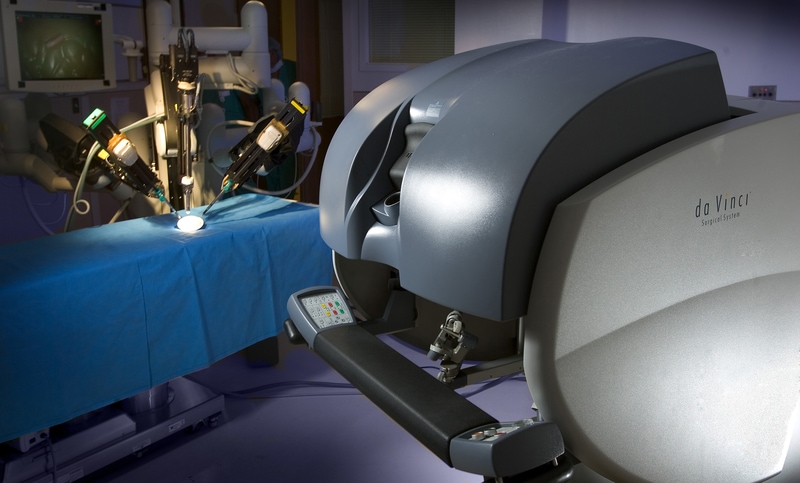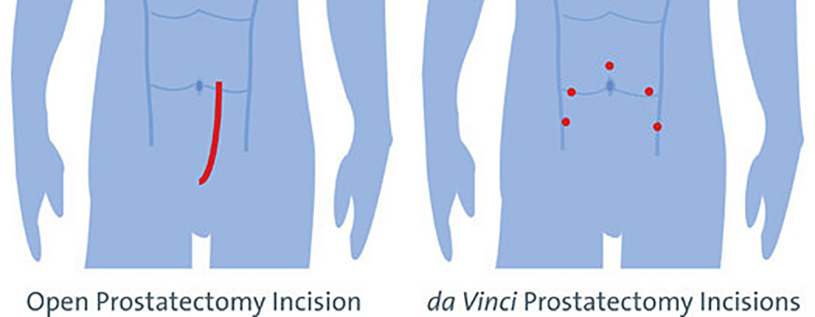Robotic Prostatectomy and how it works
Robotic Prostatectomy and how it works

Robotic prostatectomy is a procedure to remove either part or all of the prostate gland using small tools that are attached to a robotic system.
Prostatectomy is a popular surgical procedure to remove either all or part of the prostate gland, particularly for early-stage prostate. Its usage is usually to treat benign conditions in the prostate or to treat localised prostate cancer and other pelvic cancers.
The prostate gland is a part of the male reproductive system. Its main role is to produce the fluid that carries and protects sperm. It is located in the lower abdomen in men only.
There are two main types of prostatectomy, depending on the condition being treated:
Radical – A radical prostatectomy involves removing the entire prostate gland, capsule (or covering), the surrounding lymph nodes, and neighbouring tissue. This is usually a treatment for men with localised prostate cancer.
Simple – A simple prostatectomy is when an enlarged prostate is removed by enucleating it from its capsule. The sphincter muscle and surrounding nerves remain intact. It is used to treat benign conditions such as enlargement of the prostate (benign prostatic hyperplasia or BPH).
What Is Robotic Prostatectomy?
Robotic prostatectomy is a surgical method for operating on the prostate using small tools that are attached to a robotic system. Rather than the surgeon performing the procedure with their own hands, they control robotic arms with a computer. Robotic prostatectomies are far less invasive than traditional surgery and have many advantages and health benefits.
How Does It Work?
A robotic prostatectomy is performed by a surgeon who sits at a computer station and directs the movements of the robotic arms via a computer interface.
The robot’s camera and instrument-bearing arms are inserted through several small incisions in the abdomen. The prostate is detached internally, placed in a bag, then removed through one of the incisions.

Advantages of Robotic Surgery
Robotic prostate surgery has a wealth of advantages over traditional laparoscopic or open surgery. The technology used in robotic surgery enhances precision, control, and flexibility of the surgeon’s movements. This means the surgery is far less invasive.
• Instruments used in robotic prostatectomy can turn in all directions with 90 degrees of articulation
• The system can operate through much smaller incisions – just 1 or 2 centimetres
• The robotic system allows the surgeon a true 3D view of the operating field. This hand-eye instrument alignment is similar to open surgery only with all-around vision. The system has the ability to zoom in and out, without the invasive side effects of open surgery
• The surgeon can sit comfortably at the computer station, meaning they can concentrate fully on the task at hand
These factors contribute to a far less traumatic experience for patients undergoing prostate surgery. Recovery is much quicker and the precise movements of the robotic system mean that the delicate nerves and organs surrounding the prostate are spared. Through this procedure, the risk of harm to bladder control and erectile function is greatly reduced. Common causes of erectile dysfunction can be found here.
Risks
As with any surgery, there are risks associated with robotic prostatectomy. However, these risks are dramatically reduced by robotic surgery. These include:
• Surgical complications such as blood loss, infection, and deep vein thrombosis
• Incontinence – urinary function is controlled by two muscles which are located around the prostate, so surgery may cause incontinence until these muscles regain their strength.
• Erectile dysfunction – operating on cancer of the prostate will always hold the risk of postoperative erectile dysfunction as many of the nerve bundles that control erectile function are affected during surgery. However, robotic surgery, if carried out early, significantly reduces the risk of erectile dysfunction.
Prostatectomy with Urology Specialist
We are experts in the field of prostatectomy. In particular, Dr. Mohan Arianayagam specialises in robotic radical prostatectomy. Dr. Arianayagam performs robotic radical prostatectomy at both Macquarie University Hospital and Nepean Public Hospital.
As one of the most experienced urologists in Sydney, Arianayagam has performed well over 250 robotic cases. He is also a proctor for Device Technologies, who supply the Da Vinci Robotic System in Australia. Being a proctor means Dr. Arianayagam is qualified to teach other surgeons to use this technique.
Get in touch
If you have any more questions regarding robotic prostatectomy or would like to book an appointment, please feel free to contact Urology Specialist here. Dr. Arianayagam will be more than happy to assist.
Learn some more about the benefits of robotic surgery below:
Robotic surgery for prostate cancer
How can robotic surgery treat urological conditions?
Reducing the risk of erectile dysfunction with robotic surgery

The Benefits of Drinking Water for Urological Health: Do You Really Need 8 Glasses a Day?
We’ve all heard the advice: “Drink eight glasses of water a day” But is this rule as important as it…

Protect Your Kidneys: Simple Habits for Better Health
Keeping your kidneys in shape is vital for reducing the risk of chronic disease. Check out some of our top…






